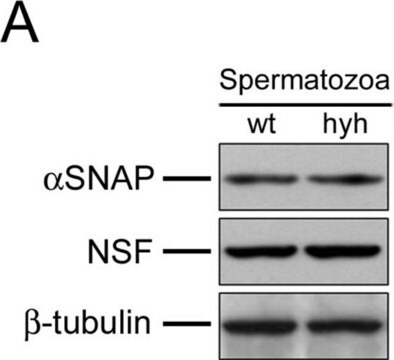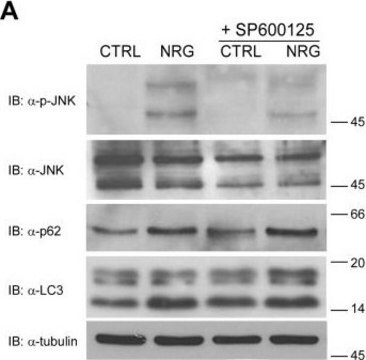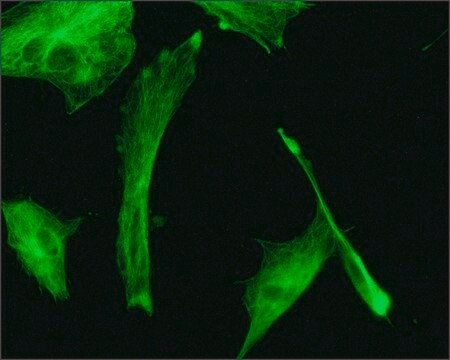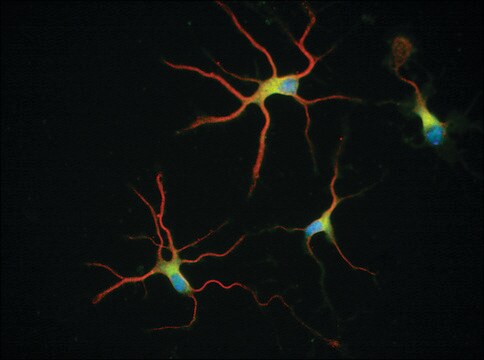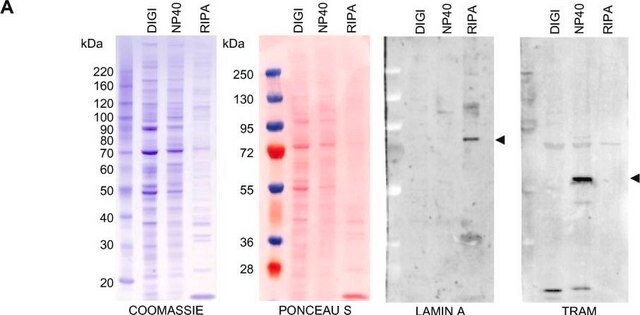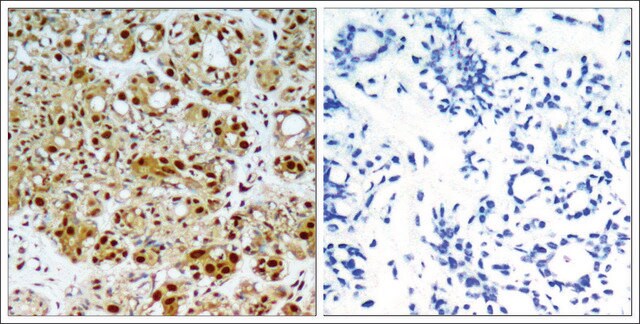T8328
Anti-β-Tubulin antibody, Mouse monoclonal
~2.0 mg/mL, clone AA2, purified from hybridoma cell culture
Sinônimo(s):
Beta Tubulin Antibody Sigma, Beta Tubulin Antibody Sigma - Monoclonal Anti-β-Tubulin antibody produced in mouse, Anti-TUBB, Anti-Tubulin, beta
About This Item
Produtos recomendados
fonte biológica
mouse
Nível de qualidade
conjugado
unconjugated
forma do anticorpo
purified from hybridoma cell culture
tipo de produto de anticorpo
primary antibodies
clone
AA2, monoclonal
forma
buffered aqueous solution
peso molecular
antigen ~50 kDa
reatividade de espécies
human, mouse, rat, bovine
embalagem
antibody small pack of 25 μL
concentração
~2.0 mg/mL
técnica(s)
immunocytochemistry: suitable
immunohistochemistry: suitable
immunoprecipitation (IP): suitable
western blot: 1-2 μg/mL using Neuro-2a cell extract
Isotipo
IgG1
nº de adesão UniProt
Condições de expedição
dry ice
temperatura de armazenamento
−20°C
modificação pós-traducional do alvo
unmodified
Informações sobre genes
human ... TUBB(203068)
Descrição geral
Especificidade
Imunogênio
Aplicação
Ações bioquímicas/fisiológicas
B2702 peptide binds to β-tubulin and inhibits natural killer (NK) cell cytotoxicity and it influences microtubule polymerization, which damages cytoskeleton organization and chaperone-like activity of tubulin. Mutation in the gene leads to various neuronal migration disorders such as lissencephaly, pachygyria and polymicrogyria malformations.
forma física
Armazenamento e estabilidade
For extended storage, freeze at -20 °C in working aliquots. Repeated freezing and thawing, or storage in “frost-free” freezers, is not recommended. If slight turbidity occurs upon prolonged storage, clarify the solution by centrifugation before use. Working dilution samples should be discarded if not used within 12 hours.
Exoneração de responsabilidade
Not finding the right product?
Try our Ferramenta de seleção de produtos.
recomendado
Código de classe de armazenamento
10 - Combustible liquids
Ponto de fulgor (°F)
Not applicable
Ponto de fulgor (°C)
Not applicable
Equipamento de proteção individual
Eyeshields, Gloves, multi-purpose combination respirator cartridge (US)
Certificados de análise (COA)
Busque Certificados de análise (COA) digitando o Número do Lote do produto. Os números de lote e remessa podem ser encontrados no rótulo de um produto após a palavra “Lot” ou “Batch”.
Já possui este produto?
Encontre a documentação dos produtos que você adquiriu recentemente na biblioteca de documentos.
Os clientes também visualizaram
Artigos
Frequently asked questions about neural stem cells including NSC derivation, expansion and differentiation.
Nossa equipe de cientistas tem experiência em todas as áreas de pesquisa, incluindo Life Sciences, ciência de materiais, síntese química, cromatografia, química analítica e muitas outras.
Entre em contato com a assistência técnica



